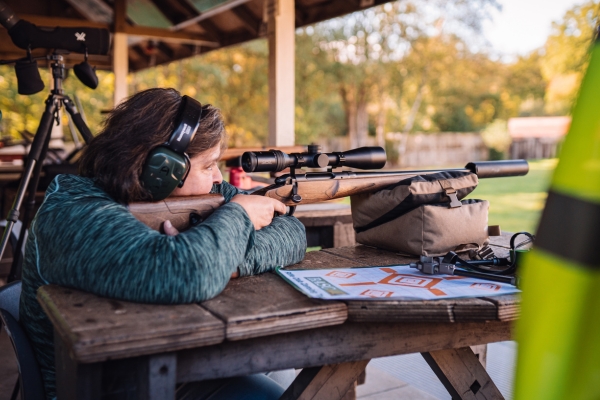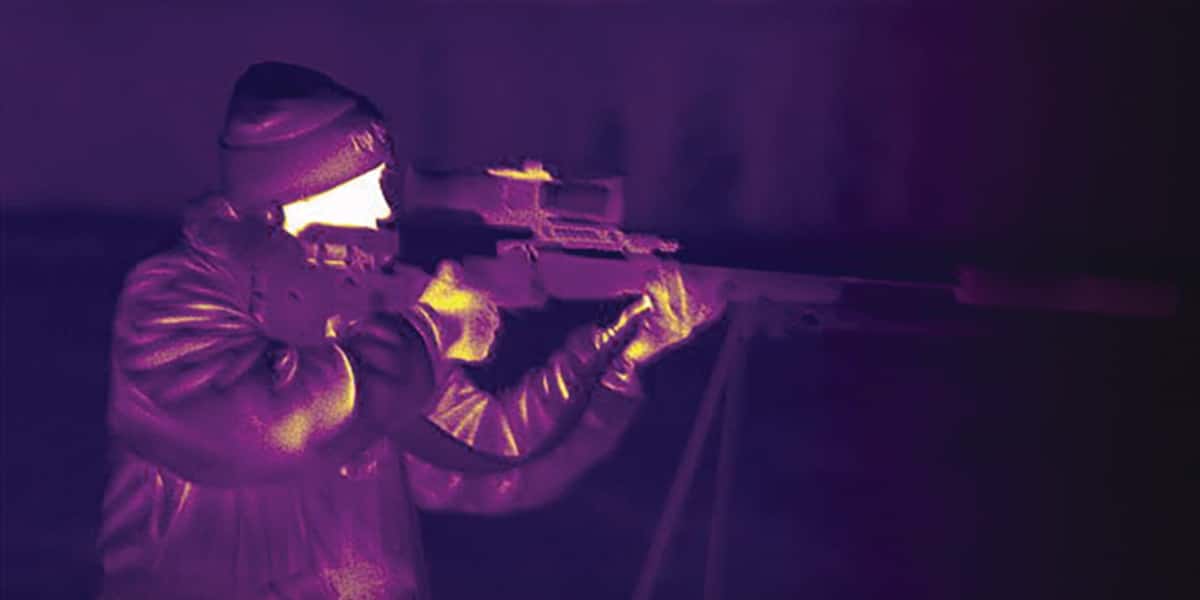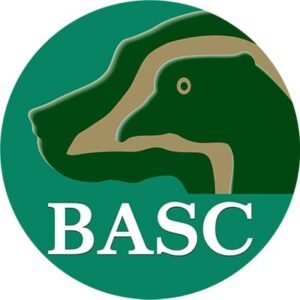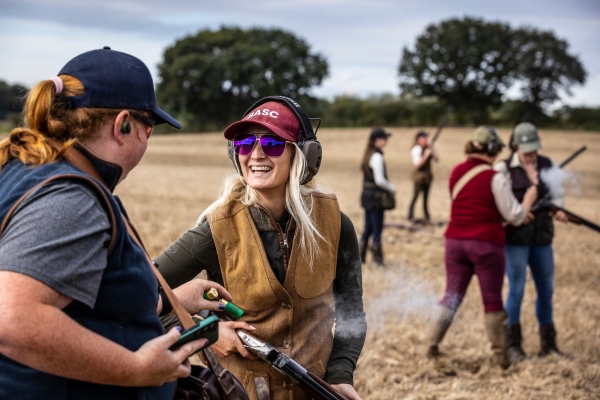
Gear up for Autumn with BASC Women in Shooting
BASC Women in Shooting has an event for you this Autumn, whether you’re new to shooting or have a favoured discipline.
Get information on the legal shooting season for mammals and birds in the UK.
Apply for funding for your project or make a donation today
Comprehensive information and advice from our specialist firearms team.
Everything you need to know about shotgun, rifle and airgun ammunition.
Find our up-to-date information, advice and links to government resources.
Everything you need to know on firearms law and licensing.
All the latest news and advice on general licences and how they affect you.


BASC deer advisor, James Sutcliffe, gives a run down of what you need to know regarding night vision and thermal imaging optics.
When it comes to night shooting, there are three main way to go about it. These are:
I plan to focus here on the technicalities of night vision and thermal imaging. Apologies to diehard advocates of the lamp, but I only have so much space and there’s more to say about NV and thermal.
Night vision covers a range of different technologies, broadly split between image intensified optics and digital night vision optics.
Image intensified optics use a system of vacuum tubes to amplify or ‘intensify’ any available light, thus giving a better image in darkness. They can produce a very good image quality in very low or even no light, usually with a green or turquoise tint (think of any film you’ve seen where the military use night vision and you’ll be on the right lines).
However, these devices can easily be damaged by exposing them to bright light, meaning daytime use is a no-go. Although I’m sure many people do use them to very good effect, I tend to think the popularity of image intensifiers is on the decline, based on the surge in affordable digital NV optics.
Digital NV works very differently, by taking any available light through a camera-type lens, passing it through digital sensors to boost the image which is then displayed on a screen for the user.
It tends to produce a crisp black and white image, although in most instances some form of light source will be required to give an image good enough to identify and shoot live quarry. A full moon will often do, but often an additional infra-red illuminator will be needed. The light from these is all but invisible to the naked eye, with different varieties available for either better range or image quality. The downside here is that for serious work at night, an upgraded illuminator is often required, adding cost and bulk to the equation.
Like image intensified optics, digital NV can provide a fantastic image in the dark, allowing for good quarry ID but, unlike intensifiers, they can be used in the daylight without any risk of damage.

Thermal imaging is a whole different ball game. A thermal imager will detect infra-red heat energy, figure out how much is being given off and convert this into an image, with hotter objects glowing brighter than cooler ones. Put simply, an animal in the open has no way of avoiding being detected.
It is possibly the best technology available for locating quarry and it will even detect animals in cover. This point needs some clarification, as many people are under the impression (largely guided by Hollywood) that thermal imagers can detect a person through a brick wall at half a mile. In reality, it can’t ‘see through’ much at all. When we talk about detecting in cover, we mean it will show the glow through any gaps in the cover.
Thermals require literally no external light, so can be used on the darkest of dark nights. There’s no need for additional illuminators, so less stuff to bolt onto a scope or spotter.
So, where’s the downside? Firstly, cost has to be a factor. Thermal imaging tech is infinitely more attainable than it ever used to be, but you can still expect to pay upwards of £3,000 for a decent thermal rifle scope. Compare this with some of the digital NV scopes out there for under £500.
Secondly, it is a commonly held belief that quarry ID through a thermal is not as easy or definitive when compared to night vision, to the point that many refuse to consider the use of thermal rifle scopes.
Having a lot of experience with thermal spotters, I can confirm that knowing what you’re looking at isn’t always as simple as with other methods. You will learn to identify movement and behaviour patterns equally as much as the initial shape or outline of an animal. It’s a skill that definitely needs to be learned and, as with any other form of shooting or optic, if you aren’t 100 per cent confident, don’t pull the trigger.
Digital NV and thermal imaging are both perfectly functional during the day. This means more and more people have one as their ‘do-everything scope’ from stalking in the day, to shooting foxes at night.
How do they compare to regular telescopic sights for use in the day? Well, they are definitely different. Most digital NV will still be in black and white during the day, though more and more do now feature full HD daytime colour modes.
Thermal imagers will look much the same in the day as at night, though as the sun gets higher in the sky, trees, rocks, fenceposts and the like will all get warmer, which on a really warm day can make the initial spotting of an animal trickier.
I’m in the very lucky position of having Pulsar’s latest offering on test, a thermal rifle scope with the option to switch to full colour mode at the press of a button. I have to say, for woodland stalking it is a seriously phenomenal piece of kit.
Before I finish, it’s useful I think to reiterate the legal position of shooting deer at night.
Across the UK it is illegal to take a deer outside of daylight hours (classed as from one hour before sunrise until one hour after sunset) without a relevant licence. The use of different optics for deer gets somewhat complicated, but I will break it down by country to give you the key facts.
England/Wales
Scotland
Northern Ireland


BASC Women in Shooting has an event for you this Autumn, whether you’re new to shooting or have a favoured discipline.

Victoria Chesters-Sutcliffe reflects on a packed fieldsports-focused weekend at the BASC Ultimate Women’s Event.

Meet the six members of Team GB who will be aiming to bring home a medal in the shooting disciplines at the Paris Olympics.
Sign up to our weekly newsletter and get all the latest updates straight to your inbox.
© 2025 British Association for Shooting and Conservation. Registered Office: Marford Mill, Rossett, Wrexham, LL12 0HL – Registered Society No: 28488R. BASC is a trading name of the British Association for Shooting and Conservation Limited which is authorised and regulated by the Financial Conduct Authority (FCA) under firm reference number 311937.
BASC Direct Ltd is an Introducer Appointed Representative of Agria Pet Insurance Ltd who administer the insurance and is authorised and regulated by the Financial Conduct Authority, Financial Services Register Number 496160. Agria Pet Insurance is registered and incorporated in England and Wales with registered number 04258783. Registered office: First Floor, Blue Leanie, Walton Street, Aylesbury, Buckinghamshire, HP21 7QW. Agria insurance policies are underwritten by Agria Försäkring.
If you have any questions or complaints about your BASC membership insurance cover, please email us. More information about resolving complaints can be found on the FCA website or on the EU ODR platform.